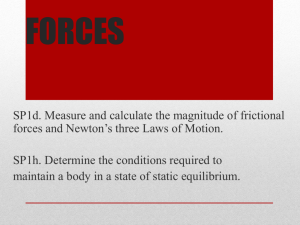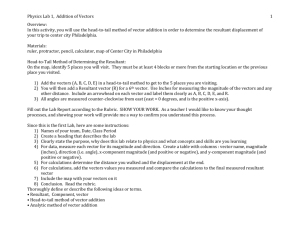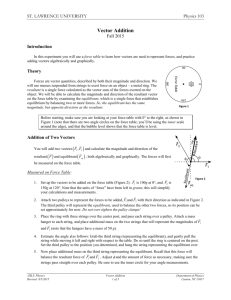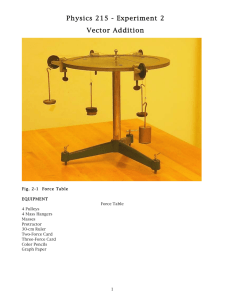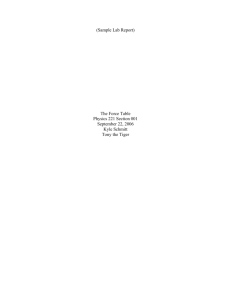VECTOR ADDITION
advertisement
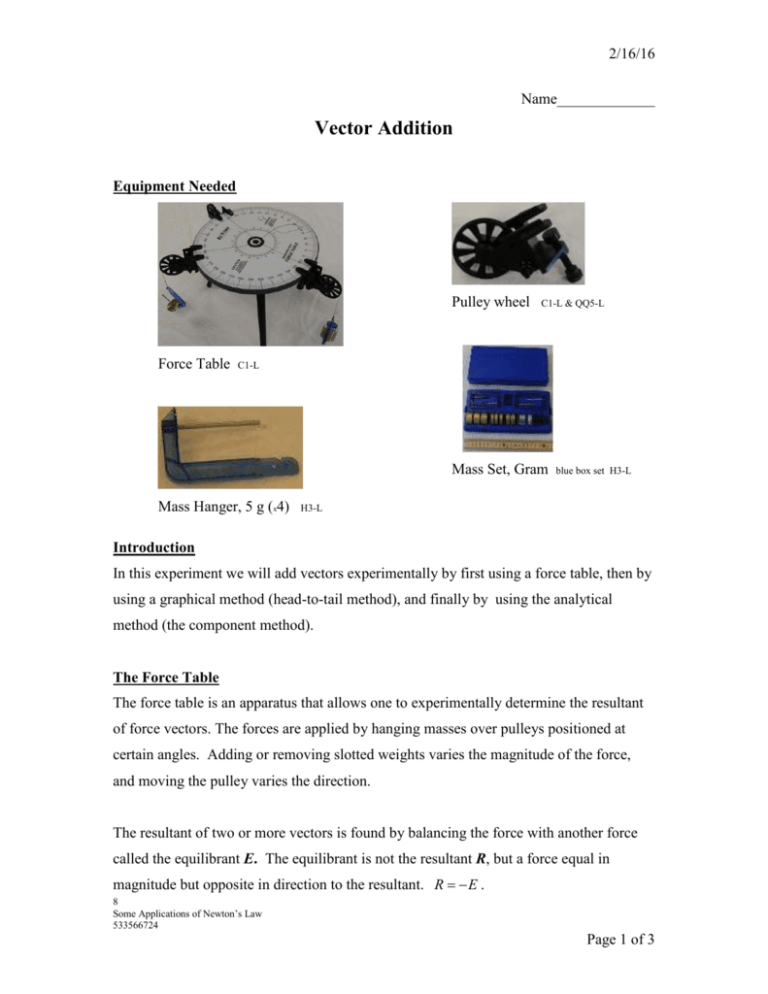
2/16/16 Name_____________ Vector Addition Equipment Needed Pulley wheel Force Table C1-L & QQ5-L C1-L Mass Set, Gram Mass Hanger, 5 g (x4) blue box set H3-L H3-L Introduction In this experiment we will add vectors experimentally by first using a force table, then by using a graphical method (head-to-tail method), and finally by using the analytical method (the component method). The Force Table The force table is an apparatus that allows one to experimentally determine the resultant of force vectors. The forces are applied by hanging masses over pulleys positioned at certain angles. Adding or removing slotted weights varies the magnitude of the force, and moving the pulley varies the direction. The resultant of two or more vectors is found by balancing the force with another force called the equilibrant E. The equilibrant is not the resultant R, but a force equal in magnitude but opposite in direction to the resultant. R E . 8 Some Applications of Newton’s Law 533566724 Page 1 of 3 2/16/16 Setup If four vectors are required, add another pulley wheel, mass hanger, & additional masses as needed. Note: when repositioning a pulley wheel take care &, gently tighten the set screw. Do not overtighten. It can be broken! Procedure For the following force vectors below, find the vector sum by using the force table. Next, add the vectors analytically by using the component method. Show all of the steps. Finally, add the vectors by using the graphical head-to-tail method. Show the diagram’s measure to scale. For all three methods, leave the units as grams as they are proportional to weight. 8 Some Applications of Newton’s Law 533566724 Page 2 of 3 2/16/16 Results Forces (grams)* Vector addition 1 Equilibrant, E Resultant, R (grams) (grams) (magnitude and (magnitude and direction) direction) F1 = 100g, 30 F2 = 100g, 120 Vector addition 2 F1 = 100g, 20 F2 = 100g, 80 Vector addition 3 F1 = 100g, 0 F2 = 150g, 90 Vector addition 4 F1 = 75g, 30 F2 = 150g, 90 F3 = 50g, 250 * “Dynes” and “Newtons” are metric force units. However, in this case we can express units in grams since weight and mass are proportional to each other. Attach analytical calculations. Show all of the steps. Attach graphs drawn to scale. 8 Some Applications of Newton’s Law 533566724 Page 3 of 3




